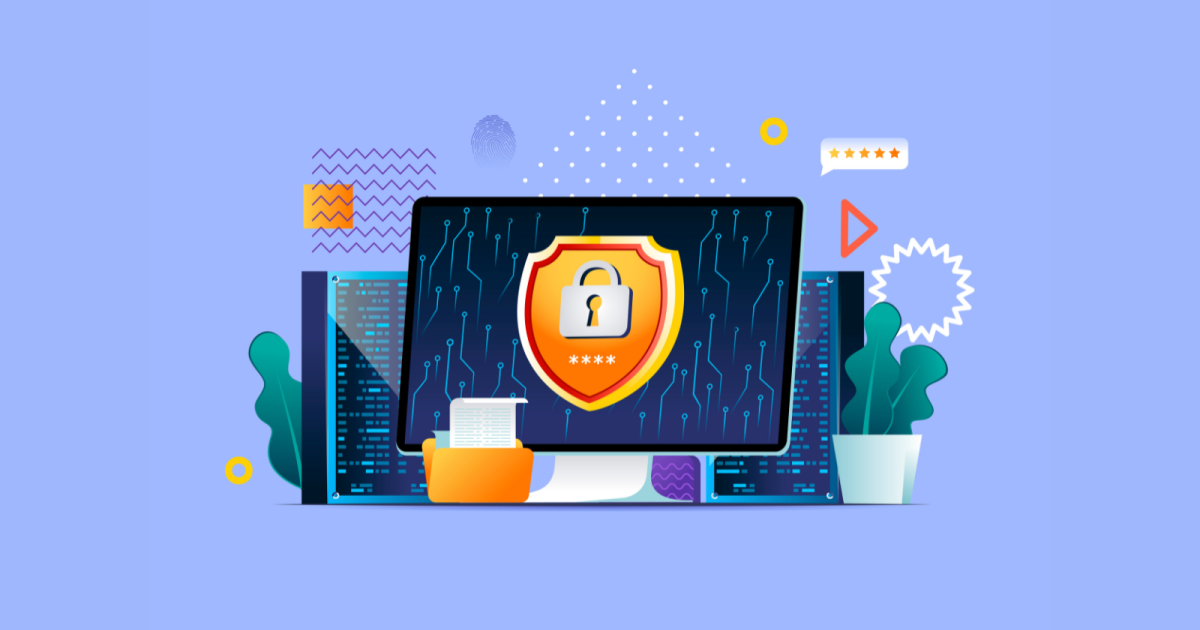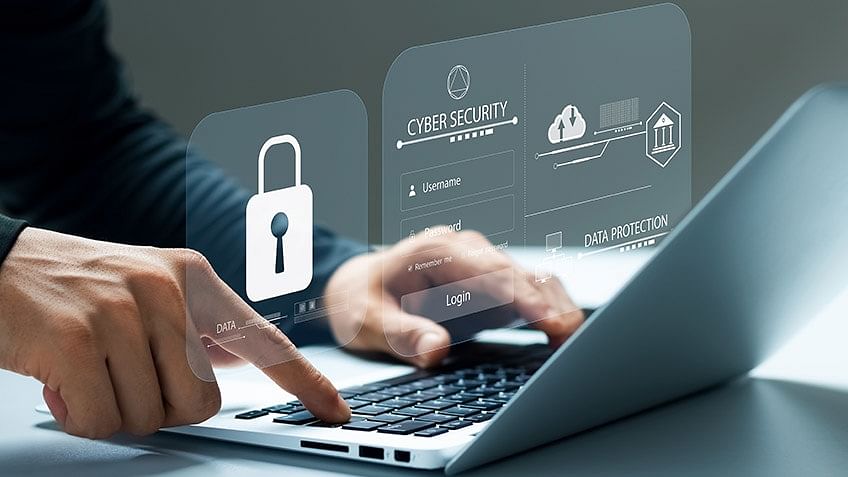Cybersecurity Tools You Need: Stay Safe Online

In an increasingly digital world, where every aspect of our lives, from personal communication to global commerce, is intertwined with online platforms, cybersecurity has transcended from a technical niche to an absolute necessity. The threats are relentless, evolving, and omnipresent, ranging from sophisticated state-sponsored attacks and large-scale data breaches to insidious phishing scams and ransomware demanding exorbitant sums. In this high-stakes environment, relying solely on caution is insufficient. Protecting your digital assets – be it your personal identity, financial information, intellectual property, or critical business data – hinges on the strategic deployment of the right cybersecurity tools. These instruments are your digital shields and sentinels, designed to detect, prevent, and respond to the myriad of threats lurking in cyberspace.
This comprehensive article delves into the indispensable array of cybersecurity tools that every individual and organization needs in their arsenal. We will dissect the core categories of these protective solutions, explore the underlying technologies that make them effective, and illuminate their transformative impact on digital safety. From fundamental antivirus software to advanced AI-powered threat detection systems and robust encryption protocols, we will uncover how these cutting-edge instruments are fortifying our digital defenses. Our aim is to provide a detailed roadmap for navigating the complex cybersecurity landscape, ensuring resilience and peace of mind in an interconnected world.
Why Cybersecurity Tools Are Essential

The internet, while a tremendous enabler, also serves as a vast, unprotected frontier where malicious actors constantly seek vulnerabilities. The sheer volume and sophistication of cyber threats have grown exponentially, making proactive and multi-layered defense absolutely critical. Here’s why cybersecurity tools are no longer optional but fundamental:
- Proliferation of Data: More data is generated, stored, and shared online than ever before, making it a prime target for theft and exploitation.
- Sophisticated Attack Vectors: Cybercriminals employ advanced techniques like zero-day exploits, polymorphic malware, advanced persistent threats (APTs), and highly personalized phishing campaigns that bypass traditional defenses.
- Financial Impact: Data breaches and cyberattacks can lead to devastating financial losses through theft, regulatory fines, legal fees, and reputational damage.
- Reputational Damage: Loss of customer trust and brand credibility can have long-lasting, detrimental effects on businesses.
- Personal Harm: Individuals face risks of identity theft, financial fraud, blackmail, and privacy violations.
- Supply Chain Vulnerabilities: Attacks often target weaker links in supply chains, impacting multiple organizations simultaneously.
- Regulatory Compliance: Governments worldwide are enacting stricter data protection regulations (e.g., GDPR, CCPA), making robust cybersecurity a legal imperative.
Without a robust suite of cybersecurity tools, individuals and organizations are exposed, leaving their valuable digital assets vulnerable to exploitation. These tools act as a proactive barrier, a watchful guardian, and a rapid responder, working in concert to minimize risk.
Key Categories of Cybersecurity Tools
Building a resilient cybersecurity posture requires a multi-faceted approach, employing different types of tools that address various aspects of defense. Here are the essential categories:
A. Endpoint Security Software
These tools protect individual devices (laptops, desktops, smartphones, servers) from malware and other threats.
- Antivirus/Anti-Malware:
- Purpose: Detects, prevents, and removes malicious software like viruses, worms, Trojans, ransomware, spyware, and adware. Modern solutions use signature-based detection, heuristic analysis, and behavioral monitoring.
- Features: Real-time scanning, quarantined files, scheduled scans, and often include web protection against malicious websites.
- Examples: Bitdefender, Norton 360, Avast, Malwarebytes, ESET.
- Endpoint Detection and Response (EDR):
- Purpose: Goes beyond traditional antivirus by continuously monitoring endpoint activity for suspicious behavior, detecting advanced threats that might bypass initial defenses, and enabling rapid investigation and response.
- Features: Behavioral analytics, threat hunting, incident response capabilities, and forensic data collection.
- Examples: CrowdStrike Falcon, SentinelOne, Microsoft Defender for Endpoint.
B. Network Security Tools
These tools protect the entire network infrastructure from unauthorized access, intrusions, and various network-based attacks.
- Firewalls:
- Purpose: Act as a barrier between a trusted internal network and untrusted external networks (like the internet), controlling incoming and outgoing network traffic based on predefined security rules.
- Types: Packet-filtering, stateful inspection, proxy firewalls, and Next-Generation Firewalls (NGFWs) that incorporate deeper inspection (DPI), intrusion prevention, and application awareness.
- Examples: Palo Alto Networks, Fortinet, Cisco ASA, pfSense (open-source).
- Intrusion Detection/Prevention Systems (IDS/IPS):
- Purpose: IDS monitors network traffic for suspicious activity and alerts administrators, while IPS actively blocks or prevents detected threats from entering the network.
- Features: Signature-based detection (known attack patterns), anomaly-based detection (unusual behavior), and real-time alerts.
- Examples: Snort (open-source), Suricata (open-source), integrated into NGFWs.
- Virtual Private Networks (VPNs):
- Purpose: Create a secure, encrypted tunnel over a public network (like the internet), protecting data privacy and anonymity, especially when using public Wi-Fi. Essential for remote workers accessing corporate networks.
- Features: Encryption protocols (OpenVPN, IKEv2), server selection, and often include kill switches to prevent data leaks if the VPN connection drops.
- Examples: NordVPN, ExpressVPN, OpenVPN (for corporate use), Cisco AnyConnect.
C. Identity and Access Management (IAM)
IAM tools manage and secure user identities and control their access to resources within an organization.
- Multi-Factor Authentication (MFA/2FA):
- Purpose: Adds an extra layer of security beyond just a password, requiring users to verify their identity using a second factor (e.g., a code from a phone app, a fingerprint, or a hardware token).
- Features: SMS codes, authenticator apps (Google Authenticator, Authy), biometric authentication.
- Examples: Integrated into almost all modern online services and enterprise platforms. Dedicated solutions like Okta, Duo Security.
- Password Managers:
- Purpose: Securely store and generate strong, unique passwords for all online accounts, reducing the risk of credential stuffing and brute-force attacks.
- Features: Encrypted vaults, auto-fill capabilities, password generation, and often security audits for weak or reused passwords.
- Examples: LastPass, 1Password, Bitwarden, Dashlane.
- Single Sign-On (SSO):
- Purpose: Allows users to access multiple applications and services with a single set of credentials, improving user experience and simplifying access management for IT.
- Examples: Okta, Azure Active Directory, OneLogin.
D. Data Security and Privacy Tools
These tools focus on protecting sensitive data at rest, in transit, and in use.
- Encryption Software:
- Purpose: Converts data into a coded format to prevent unauthorized access. Essential for protecting sensitive files, communications, and data backups.
- Types: Full disk encryption (FDE), file-level encryption, email encryption, database encryption.
- Examples: BitLocker (Windows), FileVault (macOS), VeraCrypt (open-source), PGP (for email).
- Data Loss Prevention (DLP):
- Purpose: Monitors, detects, and prevents sensitive data from leaving an organization’s network or endpoints without authorization, whether accidentally or maliciously.
- Features: Content inspection, contextual analysis, and policy enforcement across various channels (email, cloud storage, USB drives).
- Examples: Symantec DLP, Forcepoint DLP, Microsoft Purview.
- Cloud Access Security Brokers (CASBs):
- Purpose: Enforce security policies for cloud services, providing visibility into cloud app usage, protecting data in the cloud, and ensuring compliance.
- Features: Cloud app discovery, data loss prevention for cloud apps, threat protection, and compliance enforcement.
- Examples: Netskope, Zscaler, Palo Alto Networks Prisma Access.
E. Security Information and Event Management (SIEM)
SIEM systems centralize and analyze security alerts and logs from various sources across an organization’s infrastructure.
- Purpose: Provide real-time analysis of security alerts generated by network hardware and applications. They aggregate log data, correlate events, and detect security incidents that might otherwise go unnoticed.
- Features: Log management, event correlation, security analytics, incident management, and reporting for compliance.
- Examples: Splunk Enterprise Security, IBM QRadar, Microsoft Sentinel, Elastic SIEM (open-source components).
How Machine Learning Powers Modern Cybersecurity Tools

Artificial Intelligence (AI) and Machine Learning (ML) are rapidly becoming the cornerstone of cutting-edge cybersecurity tools, transforming defense from reactive to proactive and predictive.
A. Anomaly Detection
- How AI Helps: ML algorithms analyze vast quantities of normal network traffic, user behavior, and system logs to establish a baseline. They then flag any deviations from this baseline as potential anomalies, which could indicate a cyberattack (e.g., unusual login times, abnormal data transfer volumes, new network connections).
- Impact: This allows detection of zero-day attacks and novel threats that signature-based systems would miss.
B. Threat Intelligence and Prediction
- How AI Helps: AI processes global threat intelligence feeds, analyzes malware characteristics, and correlates threat data to identify emerging attack patterns, predict future attack vectors, and prioritize vulnerabilities.
- Impact: Enables proactive defense, allowing organizations to patch systems or implement new controls before an attack materializes.
C. Automated Threat Response
- How AI Helps: In SOAR platforms and EDR solutions, AI can automate elements of incident response, such as quarantining infected devices, blocking malicious IP addresses, or rolling back system changes, significantly reducing response times.
- Impact: Minimizes the damage and spread of cyberattacks by reacting at machine speed.
D. Phishing and Spam Detection
- How AI Helps: ML models analyze email content, sender behavior, and link characteristics to accurately identify and filter out sophisticated phishing attempts and spam, which often bypass traditional keyword-based filters.
- Impact: Protects users from social engineering attacks, which are a leading cause of data breaches.
E. Malware Analysis and Classification
- How AI Helps: AI can automatically analyze new and unknown malware samples, classifying them, identifying their behavior, and even developing new signatures without human intervention. Polymorphic and metamorphic malware, which constantly change their code, are particularly difficult for traditional methods but are better handled by AI.
- Impact: Faster identification and protection against rapidly evolving malware strains.
Strategic Implementation for Your Cybersecurity Fortress
Acquiring cybersecurity tools is just the beginning. Effective implementation, continuous management, and fostering a security-conscious culture are paramount.
A. Conduct a Comprehensive Risk Assessment
- Identify Assets: What data, systems, and processes are most valuable and vulnerable?
- Assess Threats: What are the most likely and impactful cyber threats to your organization or personal data?
- Understand Vulnerabilities: Where are your weak points (outdated software, misconfigurations, human error)?
- This assessment will guide your tool selection and prioritization.
B. Adopt a Layered Security Approach (Defense in Depth)
- No single tool can provide complete protection. Implement multiple layers of security (e.g., firewall, endpoint protection, IAM, data encryption) so that if one layer fails, others can still offer defense.
- This creates redundant controls, making it harder for attackers to penetrate.
C. Prioritize User Education and Awareness Training
- The human element is often the weakest link. Regularly train employees (and yourself) on cybersecurity best practices, how to spot phishing attempts, strong password habits, and the importance of reporting suspicious activity.
- Simulated phishing campaigns can be an effective way to test and improve user vigilance.
D. Implement Strong Identity and Access Management
- Enforce Multi-Factor Authentication (MFA) across all critical accounts.
- Implement the Principle of Least Privilege (PoLP), granting users only the minimum access necessary to perform their job functions.
- Regularly review user access permissions, especially for privileged accounts.
E. Ensure Regular Updates and Patch Management
- Outdated software is a primary attack vector. Establish a rigorous patch management process to apply security updates to all operating systems, applications, and firmware promptly.
- Automate updates where possible to reduce manual effort and ensure consistency.
F. Develop an Incident Response Plan
- Even with the best tools, breaches can happen. Have a clear, tested plan for how to detect, contain, eradicate, recover from, and learn from a cybersecurity incident.
- Assign roles and responsibilities, establish communication protocols, and regularly conduct tabletop exercises.
The Future of Cybersecurity Tools
The cybersecurity landscape is dynamic; today’s cutting-edge tools will be foundational tomorrow. Future innovations will focus on greater autonomy, predictive power, and integration.
A. Hyperautomation of Security Operations
- SOAR platforms will become even more sophisticated, using AI to automate an increasing number of security tasks, from incident triage to threat hunting and response actions, allowing human analysts to focus on complex, strategic challenges.
- Autonomous Security Agents: Expect more AI-driven agents that can monitor, detect, and respond to threats across an enterprise network with minimal human intervention.
B. Quantum-Resistant Cryptography
- As quantum computing advances, current encryption standards could become vulnerable. Future cybersecurity tools will incorporate quantum-resistant cryptographic algorithms to protect data from future quantum attacks.
C. Zero Trust Architecture (ZTA) Enforcement
- The “never trust, always verify” model will become the default. Tools will continuously authenticate and authorize every user, device, and application attempting to access resources, regardless of their location (inside or outside the network perimeter).
D. AI in Offensive and Defensive Capabilities
- The arms race between attackers and defenders will intensify with AI. Attackers will use AI to develop more sophisticated malware and phishing campaigns, while defenders will use AI for more advanced threat detection and proactive defense.
E. Biometric Authentication Beyond Passwords
- Expect more widespread adoption of advanced biometrics (e.g., behavioral biometrics that analyze typing patterns or gait) as primary authentication methods, moving beyond traditional passwords and simple fingerprints/face scans.
F. Supply Chain Security Tools
- Greater focus on securing the entire software supply chain, from development environments to deployment pipelines, with tools that monitor code integrity, identify open-source vulnerabilities, and verify software authenticity.
G. Privacy-Enhancing Technologies (PETs)
- As data privacy concerns grow, tools leveraging technologies like homomorphic encryption and federated learning will allow organizations to analyze data and derive insights without exposing sensitive information or violating privacy regulations.
Conclusion
In a world where digital presence is synonymous with existence, the deployment of robust cybersecurity tools is not merely a technical consideration but a fundamental imperative for survival and prosperity. These essential instruments form a comprehensive defense strategy, acting as your vigilant guardians against an ever-evolving array of cyber threats. From the foundational layers of endpoint protection and network firewalls to the advanced intelligence of AI-powered threat detection and the proactive stance of vulnerability management, each tool plays a critical role in fortifying your digital frontier.
The journey to unparalleled cybersecurity is continuous, demanding constant vigilance, adaptive strategies, and a commitment to integrating cutting-edge solutions. By understanding the capabilities of these tools, embracing a layered security approach, fostering a security-aware culture, and proactively preparing for future threats, individuals and organizations can significantly mitigate risks and navigate the digital landscape with confidence. In the relentless pursuit of digital safety, the right cybersecurity tools are not just a defense; they are your pathway to resilience and uninterrupted progress.






